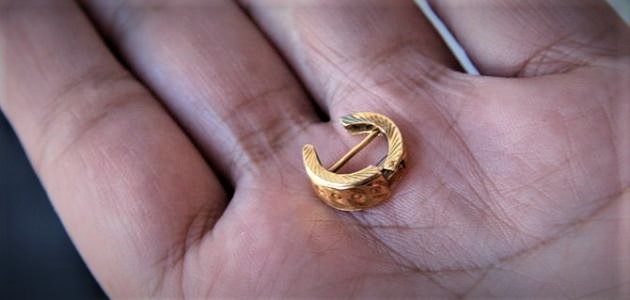Tests to identify genuine gold
There are numerous gems and adornments that are comparable in shapes, yet they are totally disparate as far as material and quality, and everybody ought to be completely mindful of the ways of recognizing these sorts and groupings of gold, whether it is new, impersonation or old. The new is made of crude, raw gold, the old gold is produced using refined and reused gold, and phony and falso gold is made of gold blended in with different materials and components that make it less significant and delightful.
Amplifying glass test:
Because of the spread of phony and impersonation gold in overflow, many are searching for ways of ensuring that the gold is genuine. The shade of the first gold is yellow and the fake pieces have a similar shading. The ideal way is to take the gold to a confided in gem dealer to confirm it, and a retreat to endorsed conventional strategies, the first is a visual assessment utilizing an amplifying glass Or by looking alone, and coming up next are the means of the assessment with the amplifying glass:
Holding the gold piece with one hand, the amplifying glass with the second hand, then, at that point, looking for the gold stamp, which is the imprint that is put on the adornments to recognize it. It is typically found on the internal edge of the rings and wristbands. Concerning gold coins and bullion, it is imprinted all over to be apparent, and this stamp is either a number from 1-999 or a number Next to the letter K from 0-24.
Utilizing the number to figure out the sort of gold and the carat in it, for instance, while viewing as the number 375, it implies that the piece comprises of 37.5% of gold, and these images might fluctuate contingent upon the country. Note the signs that the gold isn't unadulterated, for example, the presence of the letters GP, GF, GEP, these images show that the gold piece is plated, and the lower part of this covering might be copper or silver.
Search through the amplifying glass for any progressions in shading or disintegration in the tips and edges of the gold, as genuine gold doesn't dissolve and doesn't change its tone to red or bronze.
Thickness test:
The thickness of genuine gold is assessed at 19.3 (g)/(ml), and while analyzing any component and observing the thickness near this number, this implies that it very well might be gold. The milliliters are precisely clarified, and coming up next is the strategy for applying the thickness test:
- Put the piece on the precise scale in the wake of focusing it, and archive the last weight on a side sheet.
- Lay the standard graduated bowl on a level surface and empty water into it until it is half full.
- Record the number in milliliters that the water came to after it deteriorates.
- Delicately put the gold piece in the water, to try not to spread the water on the sides and diminishing its amount.
- Report the new figure in milliliters that the water came to in the wake of putting the piece.
- Make a condition to deduct the main worth from the second worth of the water level, and this outcome communicates the component's relocation of water.
- The worth created in the past advance is the size of the gold piece.
- Make a condition to come by the aftereffect of the thickness of the piece, which is the division of the heaviness of the piece that was estimated.


Comments
Post a Comment